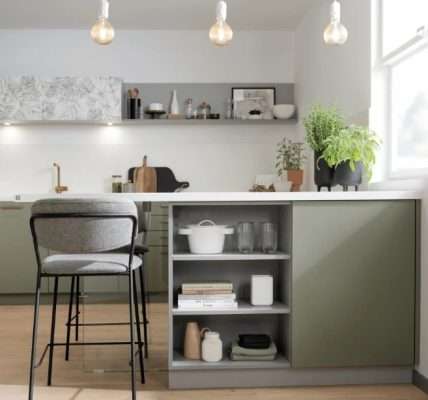Designing a kitchen for an Indian restaurant is a unique challenge, demanding a harmonious blend of traditional cooking methods, efficient workflow, and adherence to stringent hygiene standards. The success of an Indian restaurant hinges significantly on its kitchen’s ability to deliver authentic flavors consistently and quickly. Therefore, careful consideration must be given to the layout, equipment, and material choices. The intricate process of preparing Indian cuisine, with its diverse range of spices, tandoor ovens, and specialized cookware, necessitates a well-planned and robust Indian restaurant kitchen design.
Understanding the Specific Needs of an Indian Restaurant Kitchen
Unlike many other cuisines, Indian cooking often involves multiple stages of preparation and a wide variety of specialized equipment. Consider these critical factors:
- Spice Management: Dedicated areas for storing, grinding, and blending spices are essential. Proper ventilation is crucial to prevent cross-contamination of flavors.
- Tandoor Oven Integration: Tandoor ovens require significant space and specialized ventilation. Their placement should optimize workflow and minimize heat exposure for kitchen staff.
- Curry Preparation: Adequate space for preparing various curries, with multiple burners and ample prep surfaces, is vital.
- Bread Making: Whether it’s naan, roti, or paratha, a dedicated area for dough preparation and cooking is necessary.
Optimizing Workflow and Space
Effective workflow is paramount in a bustling Indian restaurant kitchen. Consider these layout principles:
The Importance of Zoning
Divide the kitchen into distinct zones for receiving, storage, preparation, cooking, and dishwashing. This minimizes cross-contamination and ensures a smooth flow of ingredients and finished dishes.
- Receiving Area: A dedicated space for deliveries, with ample room for inspection and storage.
- Storage Area: Separate areas for dry goods, refrigerated items, and frozen foods.
- Preparation Area: Large, durable work surfaces for chopping vegetables, grinding spices, and marinating meats.
- Cooking Area: The heart of the kitchen, with ranges, ovens, tandoor ovens, and other cooking equipment strategically placed for efficiency.
- Dishwashing Area: A separate area for washing dishes and utensils, with efficient dishwashing equipment.
Essential Equipment for an Indian Restaurant Kitchen
The right equipment is crucial for achieving authentic flavors and efficient operation. Here’s a list of essential items:
- Tandoor Oven: A must-have for preparing tandoori dishes.
- Multiple Burner Ranges: Essential for cooking curries and other dishes.
- Large Stock Pots: For simmering sauces and broths.
- Spice Grinders and Blenders: For preparing fresh spice blends.
- Commercial Refrigeration: To keep ingredients fresh.
- Dough Kneading Machine: For efficient bread making.
Hygiene and Safety Considerations
Maintaining a clean and safe kitchen environment is crucial for any restaurant, but especially for an Indian restaurant, where the preparation of complex dishes involves numerous ingredients and processes. Regular cleaning, proper food handling procedures, and adequate ventilation are essential. The selection of easy-to-clean materials for countertops, flooring, and walls is also important.
Material Selection and Aesthetics
While functionality is paramount, the aesthetics of the kitchen should also be considered. Durable, easy-to-clean materials like stainless steel are ideal for work surfaces and equipment. Non-slip flooring is essential for safety. Good lighting is crucial for food preparation and inspection. Consider incorporating elements that reflect the restaurant’s brand identity and create a pleasant working environment for the kitchen staff. A thoughtfully planned Indian restaurant kitchen design goes beyond mere functionality; it enhances the overall dining experience.

